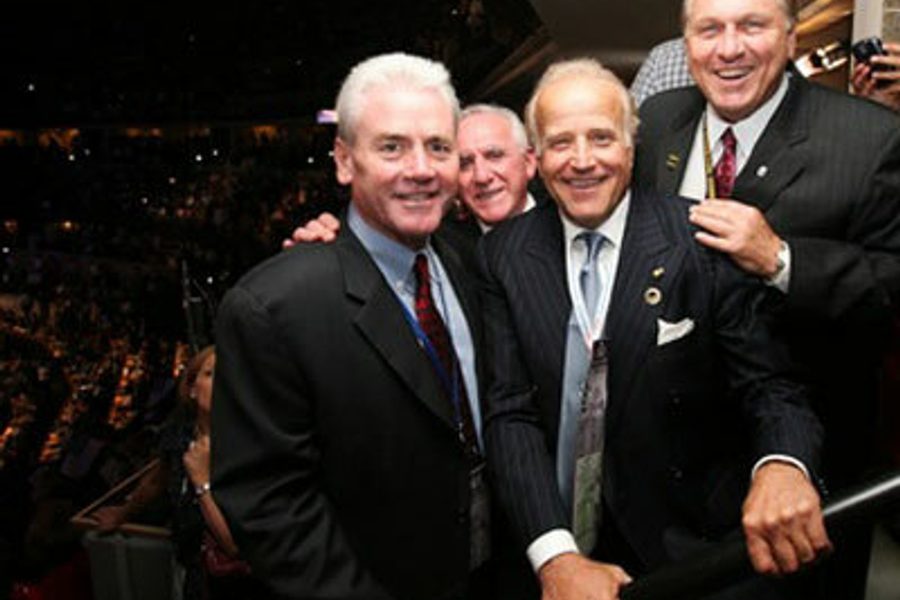
Solidarity. That was the message AFL-CIO President Richard Trumka sent in a statement welcoming the Laborers’ International Union of North America (LIUNA) back into the fold after the organization announced on August 13 that it will rejoin the AFL-CIO, effective October 1, 2010.
In his statement, Trumka said, “We are very happy that LIUNA is rejoining the AFL-CIO at a critical moment for working people…LIUNA brings a proud history and dedication to the union movement and we are delighted to welcome them back to the AFL-CIO.”
Aside from the expected kumbaya moment where labor leaders flaunt terms like solidarity and coalition building, what does LIUNA’s return to the AFL-CIO mean in practice for the labor movement, the AFL-CIO, and more specifically, the other members of the AFL-CIO Building Trades Coalition Department? Will this move galvanize the building trades, or will it cause former tensions to resurface? Once the ink is dry on the press statements and the photo ops have ended, there will be some serious issues to be hammered out between LIUNA and the AFL-CIO.
First, there is the question of whether the AFL-CIO should levy any penalty or back per capita dues accrued during LIUNA’s time away from the federation. James Williams, general president of the International Union of Painters and Allied Trades (IUPAT) said in an interview on August 27 that he couldn’t comment as to whether the AFL-CIO would assess any back per capita dues, as it would come up in the executive meetings in the near future.
When asked his personal feeling on whether the back dues should be an option, Williams stated, “In a perfect world I would say they should pay some back per capita, but realistically, it’s not likely to happen.” He later said that he didn’t feel that it was necessary to impose a per capita penalty on LIUNA at this time. Given the fact that the AFL-CIO did not levy a penalty against UNITE HERE when that union returned to the federation in 2009, it appears extremely unlikely that LIUNA will face any financial penalty for its split from the AFL-CIO in 2005.
This poses a very serious issue for the AFL-CIO: If in practice, there is no penalty for leaving the federation — in part to escape paying per capita taxes, which was very much part of the decision back in 2005 — what is to stop any affiliate union from bailing for a few years if it gets into financial problems? With the ticking time bomb many unions have with their pension programs, this precedent could turn out to be disastrous for the AFL-CIO in the coming years.
Second, there is the lingering issue of whether the AFL-CIO should require some form of a public mea culpa from LIUNA regarding the situation with the unaffiliated United Brotherhood of Carpenters (UBC). A longtime, high-ranking union official, who did not wish to be identified due to the subject matter, noted that this should make some of the other members of the AFL-CIO Building Trades Coalition a bit uneasy due to LIUNA’s past behavior.
Several years ago, LIUNA conspired with UBC to set up a tier system in which UBC would organize the skilled laborers and LIUNA would organize the unskilled laborers, therefore squeezing out the other building trade unions. This scheme fell apart, mainly because the employers weren’t cooperative enough. However, if the employers would have gone along with this plan, several of the AFL-CIO building trade unions may have ceased to exist.
Given this past activity, it should worry some of the building trade unions that not only is the AFL-CIO accepting LIUNA back with open arms, but also without any type of apology or public denouncement regarding the aforementioned situation with the Carpenters. At the very least, the AFL-CIO should require a public statement from LIUNA affirming their dedication to Article 20 of the AFL-CIO Constitution, which prohibits its affiliate unions from cutting organizing deals.
For the Labor Movement as a whole, the return of LIUNA to the AFL-CIO presents an interesting case study on the level of commitment the leaders of the movement have to coalition Building and solidarity. If LIUNA and the other members of the AFL-CIO Building Trades Coalition Department can put their past disagreements behind them in the interest of building a unified movement, there may be hope yet for an eventual Change to Win-AFL-CIO reunion. On the other hand, if LIUNA and the other building trade unions are unable to work past the arguments of the past, it does not bode well for hopes of the return of the remaining CtW family to the AFL-CIO.
For their part, the member unions of the Building Trades Coalition Department are publicly supportive of LIUNA’s return. Williams hailed LIUNA President Terry O’Sullivan as a “strong, progressive leader.” One has to wonder, however, how this will play out behind closed doors at the upcoming AFL-CIO executive meetings, and whether this will turn out to be a major victory for Trumka, or just another division in the house of labor.
This post originally appeared at The Virtual Picket Line, Riedel’s blog.





